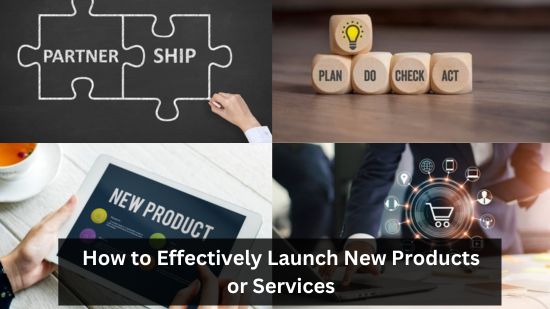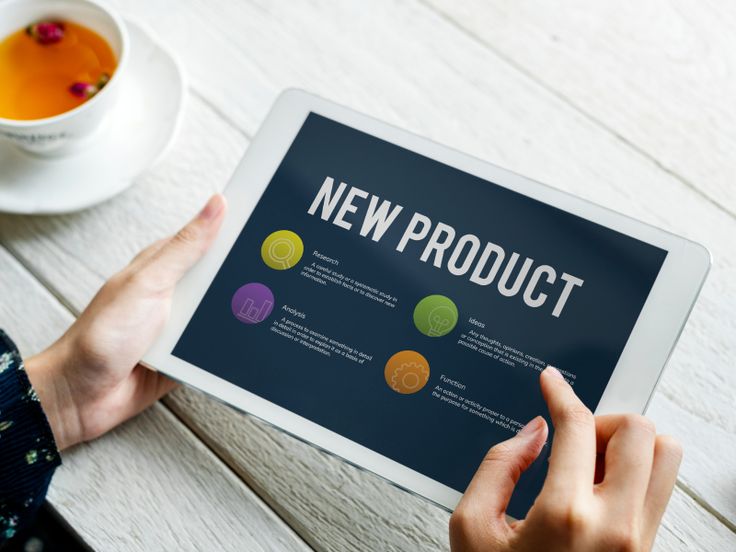
How to Effectively Launch New Products or Services
“How to Effectively Launch New Products or Services”
Launching a new product or service can be an exhilarating but demanding process, filled with opportunities and obstacles. To ensure a successful introduction, meticulous planning is essential, alongside a deep understanding of the market and your target audience. This guide is designed to provide a step-by-step approach to help you navigate the complexities of the launch, from initial concept to market entry. By following these essential steps, you’ll be equipped to make a significant impact and drive your business towards achieving its strategic objectives.
Introduction
Importance of a Successful Launch
Launching a new product or service is a pivotal moment for any business, marking a significant opportunity to make a strong impression. A successful launch can drive substantial growth, attract new customers, and reinforce your position in the market, potentially setting the stage for long-term success. To achieve this, careful planning and precise execution are essential, ensuring that every detail aligns with your target audience’s expectations and needs.
Common Challenges in Product Launches
Despite the potential benefits, many businesses need help with the launch phase. Common issues that arise include inadequate market research, which can lead to misaligned product offerings and unclear messaging that fails to resonate with the target audience. Additionally, poor timing and insufficient marketing efforts can undermine the launch, making it crucial to address these obstacles effectively to ensure the product’s success.

Credit: pixelcrayons.com
Understanding Market Needs
Conducting Market Research
Before launching a product, conducting thorough market research is crucial for success. This process involves analyzing current industry trends, understanding the specific needs and preferences of your target customers, and identifying any gaps or opportunities within the market. By utilizing tools such as surveys, focus groups, and competitor analysis, you can gather valuable insights that will guide your product development and marketing strategies, ensuring you meet the demands of your potential customers effectively.
Identifying Target Audience
Defining your target audience is crucial for tailoring your marketing efforts. By understanding key aspects such as demographics, preferences, and behaviors, you can create marketing campaigns that are more aligned with what your potential customers are looking for. This approach not only enhances engagement but also increases the likelihood of converting prospects into loyal customers.
Analyzing Competitors
Competitor analysis helps you understand what others in your industry are doing and identify opportunities to differentiate your product. By examining their strengths and weaknesses, you can pinpoint areas where you can excel and offer something unique. Additionally, analyzing customer feedback on your competitors allows you to address gaps and craft a product that stands out in the market.
Developing a Unique Value Proposition
Crafting a Compelling Message
Your value proposition is crucial as it distinguishes your product from competitors by highlighting its unique benefits and features. It should deliver a clear and concise message that resonates with your target audience, effectively addressing their needs and pain points. A well-crafted value proposition not only grabs attention but also persuades potential customers by demonstrating the specific advantages and superior value of choosing your product over others.
Highlighting Key Differentiators
Identify and highlight the key differentiators that set your product apart from the competition. Focus on aspects such as superior quality, innovative features, or exceptional customer service, and ensure these unique selling points are prominently featured in your marketing materials. This clear communication will help potential customers quickly understand the unique benefits of your product and why it stands out in the marketplace.

Credit: launch-ads.com
Creating a Comprehensive Marketing Plan
Setting Clear Goals and Objectives
A well-defined marketing plan begins by establishing clear, measurable goals and objectives to direct your strategy. Setting specific targets—such as enhancing brand awareness, boosting sales, or gaining market share—provides a clear focus and purpose. These defined objectives not only guide your marketing efforts but also enable you to track progress and evaluate the effectiveness of your initiatives.
Choosing the Right Marketing Channels
Select the marketing channels that best align with where your target audience spends their time and engages most. This might involve leveraging social media platforms, crafting compelling email campaigns, producing valuable content, or utilizing traditional advertising methods. Since each channel has its unique advantages, employing a multi-channel strategy often proves to be the most effective approach to maximize reach and impact.
Budgeting for the Launch
Allocate a budget for your marketing activities, which should cover advertising, promotions, and events. This careful financial planning ensures that you have sufficient resources to implement your strategies efficiently. By sticking to a well-defined budget, you can avoid overspending and allocate funds to the areas that will have the most impact on your marketing goals.
Building a Strong Brand Identity
Designing a Memorable Logo and Tagline
A strong brand identity begins with a memorable logo and tagline that encapsulates the essence of your brand. These elements need to be visually appealing and resonate with your target audience, ensuring they effectively communicate your brand’s personality and core values. By crafting a distinctive logo and tagline, you establish a foundation for brand recognition and loyalty, making it easier for consumers to connect with and remember your brand.
Establishing Brand Guidelines
Consistent branding across all touchpoints is crucial for building strong brand recognition and trust with your audience. By establishing comprehensive brand guidelines, you can dictate the use of logos, colors, fonts, and messaging, which helps maintain a cohesive and professional appearance. This consistency not only reinforces your brand’s identity but also creates a more memorable and reliable impression on your customers.

Credit: cfone.com
Product Development and Testing
Prototyping and Iteration
Develop prototypes of your product and refine them based on feedback from users and stakeholders. This iterative process involves testing and modifying your designs to address issues and enhance performance. By continuously improving prototypes, you can ensure the final product meets customer expectations and functions effectively in real-world scenarios.
User Testing and Feedback
Conduct user testing to gather feedback on your product, which is crucial for identifying any potential issues or areas for improvement. This process allows you to address concerns before the official launch, ensuring a smoother introduction to the market. By refining your product based on user feedback, you reduce the risk of encountering problems after launch, ultimately leading to a more prosperous and user-friendly product.
Finalizing the Product
Once testing is complete and all necessary adjustments have been made, proceed to finalize the product for its official launch. Confirm that every component, including packaging, user instructions, and required certifications, is thoroughly reviewed and in place. Conduct a final quality check to ensure that the product meets all standards and is ready for distribution to customers.
Strategic Pricing and Positioning
Determining Pricing Strategy
Develop a pricing strategy that not only reflects the intrinsic value of your product but also aligns with the prevailing market expectations. It’s essential to analyze various factors, including production costs to ensure profitability, competitor pricing to remain competitive, and the perceived value to the consumer to justify the price. Balancing these elements will help you establish a pricing structure that supports your business goals and attracts your target audience.
Positioning in the Market
Position your product strategically to emphasize its distinct advantages and capture the interest of your target audience. This approach not only sets your product apart from competitors but also helps carve out a specific market niche. By clearly communicating these unique benefits, you can enhance your product’s appeal and drive customer preference.
Competitive Pricing Analysis
Analyzing competitors’ pricing is crucial for maintaining a competitive edge in the market. By understanding how your product’s price compares to others, you can strategically adjust your pricing to appeal to price-sensitive customers. This approach not only helps in drawing potential buyers but also positions your product as a strong and viable option among competitors.

Credit: medium.com
Pre-Launch Activities
Generating Buzz and Hype
Generate excitement for your upcoming product launch by creating a buzz that captures attention. Implement teaser campaigns and countdowns to build anticipation, giving your audience glimpses of what’s to come. Engage them further with sneak peeks that hint at the unique features and benefits of your product.
Building a Pre-Launch Email List
Collecting email addresses from interested customers before the launch is crucial for building a targeted audience. It enables you to communicate directly with potential buyers, providing them with timely updates about the launch, exclusive offers, and detailed product information. This approach not only keeps your audience engaged but also helps to build anticipation and drive initial sales.
Engaging with Influencers and Media
Collaborating with influencers and media outlets can significantly boost your reach and impact. Influencers offer genuine endorsements that resonate with their audience, enhancing trust and engagement with your brand. Meanwhile, media coverage elevates your visibility and adds credibility, positioning your brand as a recognized and authoritative presence in your industry.
Launch Day Execution
Coordinating Launch Events
Organize events to celebrate and promote your product launch, which could include a range of activities such as virtual or in-person gatherings. Host product demonstrations to showcase your product’s features and benefits, allowing potential customers to experience it firsthand. Additionally, arrange Q&A sessions to engage with your audience, address their questions, and build a connection with them.
Leveraging Social Media
Leverage social media platforms to announce your launch and connect with your audience in real time, creating a buzz around your new project. Share behind-the-scenes content to give your followers an insider’s view and build excitement. Actively respond to comments and encourage user-generated content to foster a sense of community and engagement.
Real-Time Customer Support
Make sure customer support is fully operational on launch day to address any questions or issues that may arise quickly. Timely and efficient responses from your support team will not only resolve problems but also help build trust with your customers. Demonstrating a commitment to customer satisfaction from the start can significantly enhance your brand’s reputation and foster loyalty.

Credit: issuu.com
Post-Launch Strategies
Monitoring Performance Metrics
Track key performance metrics to evaluate the success of your launch. This involves monitoring sales data to gauge revenue and market demand, analyzing website traffic to understand visitor behavior and engagement, and assessing social media interactions to measure brand visibility and audience sentiment. Additionally, collecting and reviewing customer feedback provides valuable insights into user satisfaction and areas for improvement.
Collecting Customer Feedback
Gathering feedback from customers is crucial for gaining insights into their experiences with your product. This process allows you to pinpoint specific areas where improvements are needed, helping to enhance overall satisfaction. Additionally, customer feedback provides valuable input for guiding future product development and ensuring that new features align with user needs and preferences.
Adjusting Strategies Based on Feedback
Use the feedback to make necessary adjustments to your product and marketing strategies, tailoring them to meet customer needs better. By incorporating this feedback, you enhance the product’s relevance and appeal, leading to improved customer experiences. Continuous improvement not only helps address current issues but also fosters long-term success and sustained customer satisfaction.
Leveraging Digital Marketing
SEO and Content Marketing
Optimize your website for search engines by incorporating relevant keywords, improving site speed, and ensuring mobile compatibility. Create valuable content that resonates with your target audience to capture their interest and keep them engaged. This approach not only enhances your website’s visibility but also drives organic traffic and builds long-term audience trust.
Pay-Per-Click Advertising
Pay-per-click advertising is an effective way to quickly reach a broader audience by placing targeted ads that appear in search results or on relevant websites. By focusing on specific demographics and keywords, these ads can attract potential customers who are interested in your product or service. This approach is precious during the initial launch phase, as it can drive significant traffic and boost conversions by generating immediate visibility.
Social Media Campaigns
Develop social media campaigns that not only promote your product but also foster meaningful user engagement. Craft compelling content that resonates with your target audience and utilizes various formats like images, videos, and stories to capture their attention. Implement a balanced approach by integrating both organic strategies, such as influencer collaborations and interactive posts, with paid strategies like targeted ads to enhance reach and overall impact.

Credit: sdcorporatelaw.com
Building Partnerships and Alliances
Collaborating with Other Brands
Partnering with complementary brands can significantly broaden your reach and provide additional value to your customers by leveraging each other’s strengths and customer bases. Joint promotions, such as bundled offers or exclusive discounts, can capture the attention of new audiences who might have yet to be reached. Additionally, co-branded content helps enhance credibility and trust by associating your brand with reputable partners, creating a more substantial overall impression.
Forming Strategic Alliances
Establishing alliances with industry leaders and organizations is crucial for strengthening your market position. Such partnerships can offer valuable resources, including advanced technology and expertise, that might be otherwise inaccessible. Additionally, they provide insights into industry trends and open up new opportunities for collaboration and growth.
Utilizing Affiliate Marketing
Leverage affiliate marketing to boost sales and reach new customers. Affiliates promote your product or service through their own platforms, and in return, they earn a commission on each sale they generate. This strategy not only enhances your marketing reach but also aligns the interests of your affiliates with your sales goals, creating a mutually beneficial arrangement.
Customer Support and Engagement
Setting Up Customer Support Channels
Establishing multiple customer support channels, such as phone, email, and live chat, ensures that customers can reach out in the way that suits them best. This approach not only caters to different preferences and needs but also enhances the efficiency of resolving issues. Accessible support significantly boosts customer satisfaction and fosters greater loyalty, as customers feel valued and well-supported.
Engaging with Customers Post-Launch
Maintaining engagement with customers after the launch involves more than just initial interactions. Implement follow-up communications to check in on their satisfaction and offer additional assistance as needed. Establish loyalty programs and provide ongoing support to build lasting relationships and encourage repeat business.
Building a Community Around Your Product
Building a community of customers and advocates fosters a supportive network where individuals can share their personal experiences and offer assistance to one another. This not only strengthens the bond between the brand and its customers but also cultivates a loyal customer base that is more likely to advocate for the brand. Additionally, such a community can significantly boost word-of-mouth marketing, as satisfied customers naturally share their positive experiences with others.

Credit: fitzdesignz.com
Measuring Success and ROI
Defining Key Performance Indicators (KPIs)
To gauge the success of your launch, it’s crucial to track key performance indicators (KPIs) such as sales volume, which reflects the overall market acceptance of your product. Customer acquisition cost (CAC) measures the efficiency of your marketing and sales strategies by indicating how much you spend to gain each new customer. Additionally, return on investment (ROI) evaluates the profitability of your launch by comparing the gains against the costs incurred, providing insight into the financial effectiveness of your efforts.
Analyzing Sales Data
Regularly analyzing sales data is crucial for tracking performance and identifying emerging trends within your business. By keeping a close eye on these metrics, you gain insights into which strategies are effective and which may require modification. This ongoing evaluation helps ensure that your business adapts to changing market conditions and optimizes its approach for better results.
Evaluating Overall ROI
To calculate the return on investment (ROI) for your launch activities, first, measure the total revenue generated from these activities. Then, subtract the total costs incurred in executing them to find your net profit. Finally, divide the net profit by the total costs and multiply by 100 to express the ROI as a percentage, which will help assess the effectiveness of your strategies and guide future marketing decisions.
FAQs
What is the first step in launching a new product or service?
The first step is conducting thorough market research to understand customer needs and identify opportunities.
How can I create buzz before my product launch?
Generate buzz by using teaser campaigns, engaging with influencers, and building a pre-launch email list.
Why is competitor analysis critical?
Competitor analysis helps you understand the market landscape, identify gaps, and differentiate your product.
What should be included in a marketing plan?
A marketing plan should include clear goals, target audience, marketing channels, budget, and timelines.
How do I determine the right pricing strategy?
Consider factors such as production costs, competitor pricing, and perceived value to set a competitive and profitable price.
What metrics should I track post-launch?
To evaluate success, track metrics such as sales volume, website traffic, customer feedback, and social media engagement.
Conclusion
Launching a new product or service is a multifaceted process that requires careful planning and strategic execution. By understanding market needs, developing a unique value proposition, creating a comprehensive marketing plan, and continuously engaging with customers, you can ensure a successful launch. Monitoring performance and being ready to adjust your strategies based on feedback will help sustain momentum and drive long-term success. Embrace these steps, and you’ll be well on your way to making a significant impact in the market with your new product or service.






